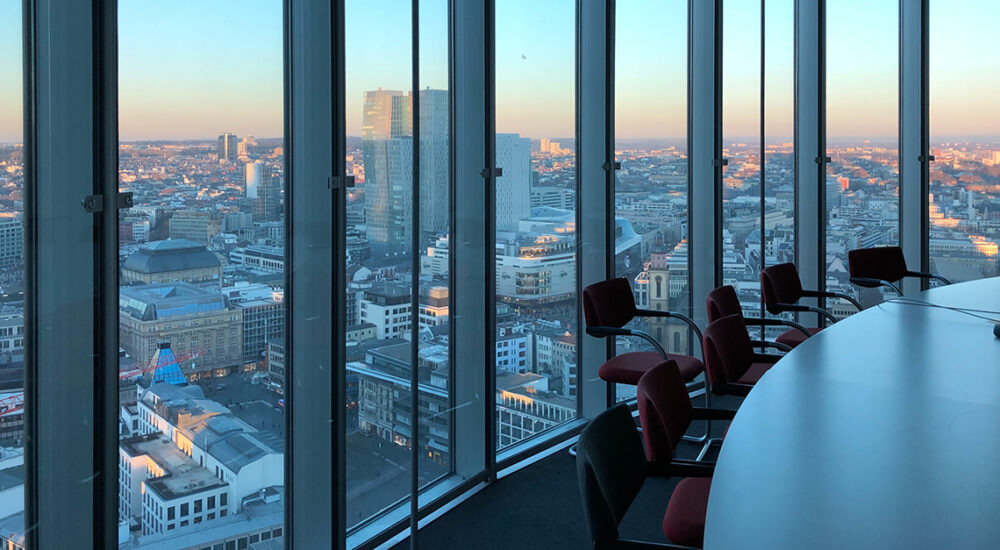Last month at our TA Leaders’ Breakfast, we were introduced to the term “leadership deficit” by Bertie Tonks, Chief People Officer at Collinson, who together with Nikki Humphrey, Chief People Officer of Virgin Group, were invited to talk about how Talent Acquisition Leaders can get ahead of the curve to develop tomorrow’s skills today.
This concept highlights the pressing need for leaders to forge deeper connections with their teams as businesses change and questions the common narrative that often points fingers at middle management for cultural problems rather than at a failure in senior-level leadership.
In this article, we explore how a leadership deficit contributes to the challenges of maintaining cultural alignment in teams and fostering genuine connections in organizations.
What is a leadership deficit?
The concept of a leadership deficit is not just a catchphrase; it highlights a critical organizational challenge that goes beyond the usual discussions centered on established hierarchies and strict authoritative models within leadership. In essence, a leadership deficit arises when leaders, despite being physically present, fail to build meaningful connections with their teams. This deficit becomes particularly pronounced in family-owned businesses, where maintaining cultural alignment is paramount.
The advent of remote work, accelerated by the global pandemic, has intensified the leadership deficit. Leaders, confined by digital interfaces, may find themselves interacting only with those they deem crucial for immediate business needs. This has exacerbated the emotional distance between leaders and their teams, and calls for a renewed focus on genuine connection and understanding.
Leadership beyond hybrid work environments
The ongoing debate surrounding hybrid vs. face-to-face work environments demands practical insights for effective implementation. It’s not just about choosing between physical and virtual spaces; the key lies in making tangible improvements that enhance leadership dynamics with human connection at the core.
Embracing cutting-edge technologies is crucial for seamless communication and collaboration. This includes integrating video conferencing tools, project management platforms, and virtual workspaces to bridge the gap between physical and virtual interactions. These solutions facilitate ongoing collaboration and communication within teams, creating a sense of unity among remote and in-office team members.
Investing in training programs is paramount to equip leaders with the necessary skills for effective communication in diverse settings. This encompasses virtual leadership training, cross-cultural communication workshops, and emotional intelligence development. It ensures that leadership at all levels are actively demonstrating the desired communication practices, such as engaging in open, transparent, and inclusive communication. This, in turn, fosters a company culture that values and promotes inclusive communication where dialogue is encouraged, regardless of the work environment.
Implementing robust feedback mechanisms is necessary to gauge the effectiveness of communication strategies. This involves regular surveys, one-on-one check-ins, and performance reviews that specifically assess leadership in both physical and virtual contexts.
Flexible work policies are also essential, prioritizing outcomes over physical presence to accommodate the needs of a diverse workforce. This approach encourages leaders to focus on the quality of interactions rather than the location.
Linking leadership characteristics to bonuses
The practice of tying leadership characteristics to bonuses elicits varied perspectives. While some see it as a necessary incentive to drive behavioral change, others argue that it not only risks becoming a mere tick-box exercise, further exacerbating the leadership deficit, but also provides a challenge in measuring these characteristics as part of the bonus structure.
However, the key to a transformative leadership model lies in fostering a culture where leadership is not merely a designated role but an ingrained expectation. Leaders should inherently be motivated to exhibit effective leadership qualities, with bonuses reflecting their genuine impact on the organization’s overall success. Included in this should be inclusive management practices aligned with the organization’s diversity goals as a standard part of their role, not as an add-on. This perspective aligns with the broader shift towards purposeful leadership, where leaders are expected to embody values that contribute to the organization’s mission.
Bespoke interventions and purposeful leadership models
Addressing the leadership deficit requires a departure from generic strategies towards personalized interventions and purposeful leadership models. This tailored approach seeks to recognize the unique qualities of each leader, delving into their personal missions and fostering a profound connection with their teams. This process cultivates a culture of vulnerability and authenticity, acknowledging that leadership development is a continuous, personalized journey.
In navigating the leadership deficit, organizations can create interventions that align with purposeful leadership models. These models intertwine personal missions with organizational goals, breaking away from conventional approaches. Such interventions signify a shift from top-down methods, emphasizing a more inclusive and participatory leadership model. This change demonstrates a commitment to adapting leadership dynamics and aligns with cultivating a positive organizational culture that resonates with both leaders and team members.
The term “leadership deficit” might sound ominous, but it serves a vital purpose – to draw attention to a critical issue that requires collective acknowledgment and action. By understanding the essence of this deficit, debunking blame dynamics, and exploring innovative solutions like bespoke interventions, organizations can pave the way for a new era of purposeful and effective leadership.
You can read our full insights from the TA Leaders’ Breakfast with Chapter 2 here.
